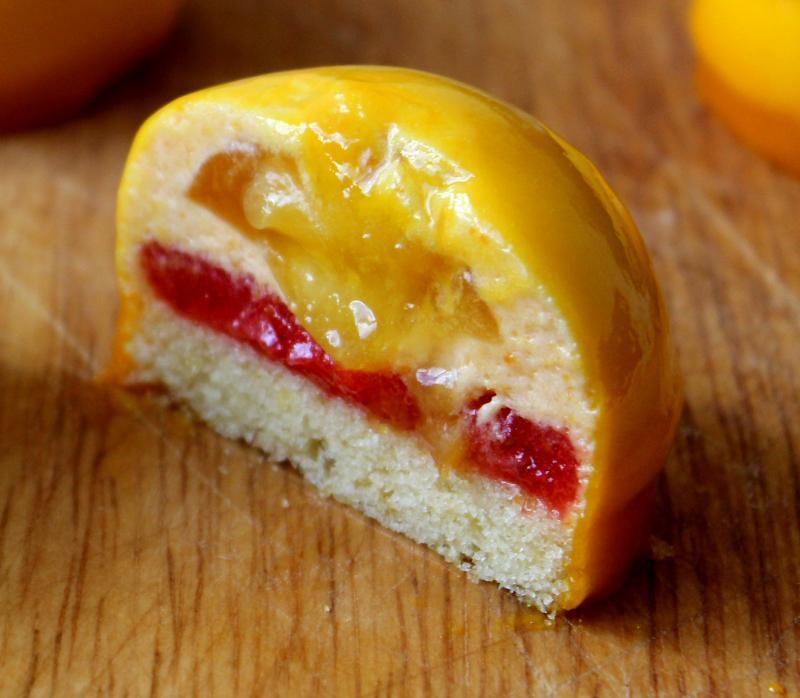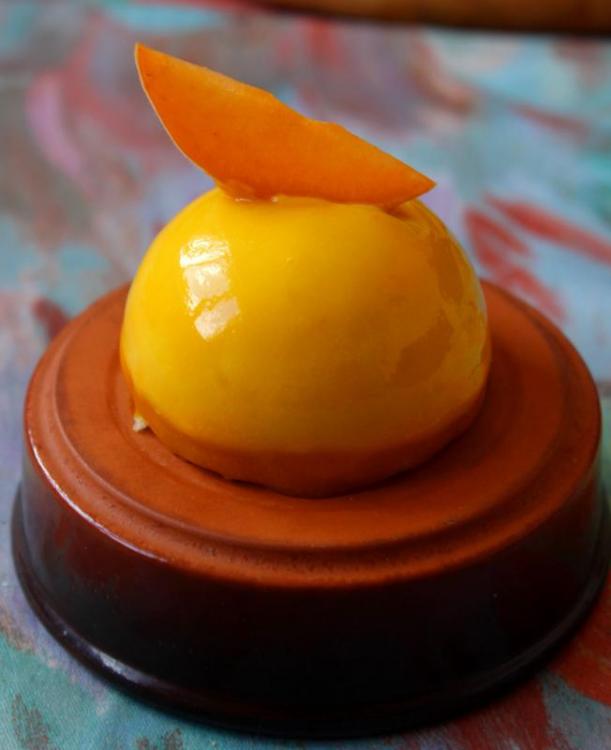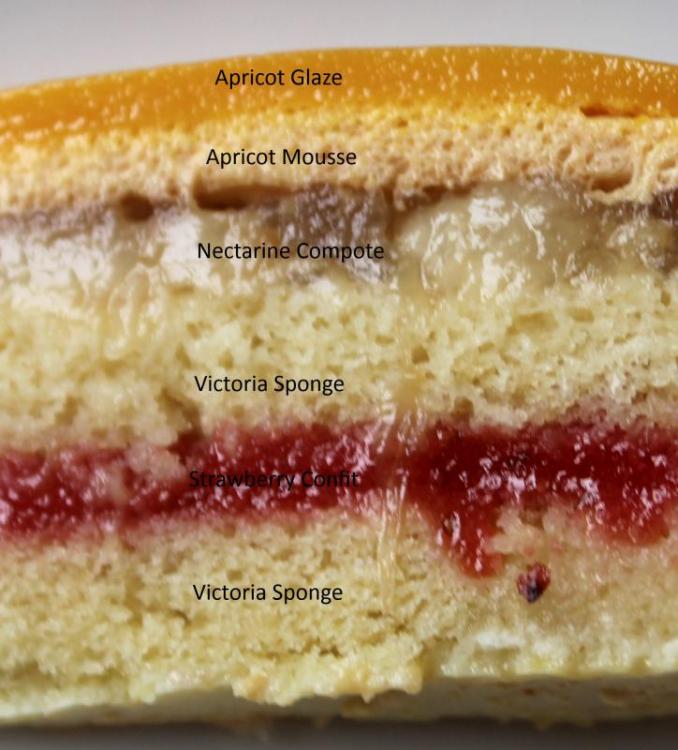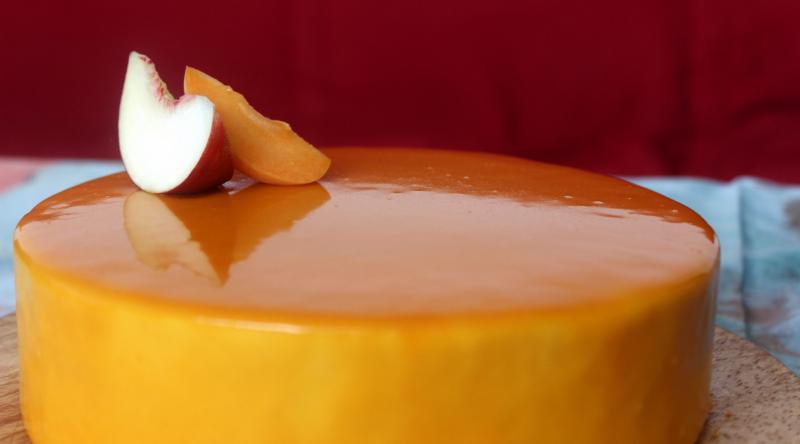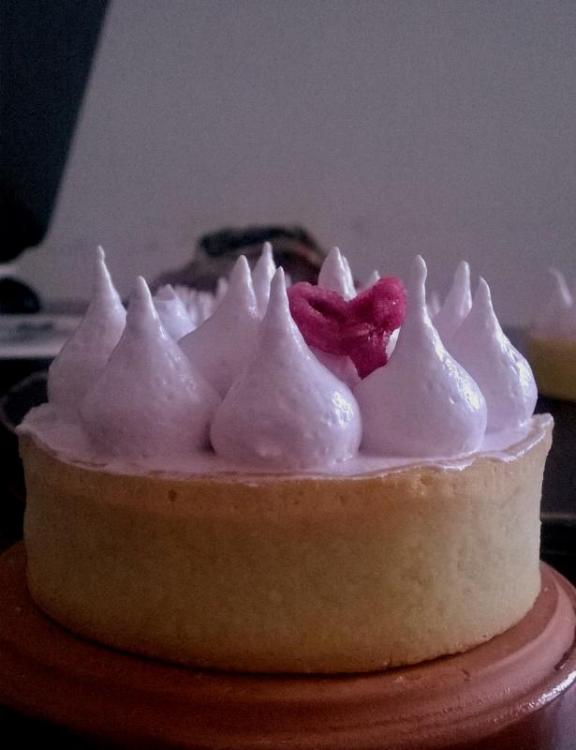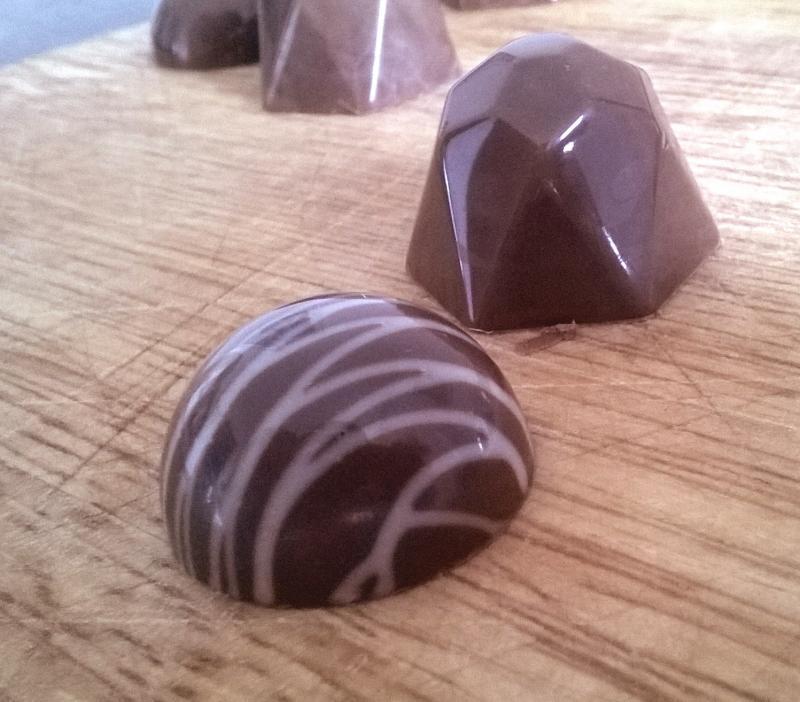-
Posts
838 -
Joined
-
Last visited
Content Type
Profiles
Forums
Store
Help Articles
Everything posted by jmacnaughtan
-
Vanilla makes every (sweet) thing taste better. Tonka bean could work as well. Failing that, caramel is a classic, and if you're monkeying around with the main filling, there's always walnuts or blackberries.
-

Your Daily Sweets: What are you making and baking? (2014)
jmacnaughtan replied to a topic in Pastry & Baking
Surprisingly enough, I didn't change the recipe at all- it was more the ratio of sponge to the other components. Cutting it back to a half-centimeter layer (the whole cake here was no more than around a couple of inches high, and the entremet was 2cm of cake for 4.5cm total) meant that it didn't dominate the fruit. I may still tinker with the recipe though, it was still a little dense for my liking. Maybe that's unavoidable when it's frozen... -
It would be easier and more effective to freeze them. If you want to store them at room temperature for any length of time, you're going to have to start monkeying around with water activity and acidity regulation.
-

Your Daily Sweets: What are you making and baking? (2014)
jmacnaughtan replied to a topic in Pastry & Baking
I had another go with the Victoria Sponge, and this one's a lot better. Lighter, fresher, generally just tastes better. I'll try it once more as a full-size entremet though. Victoria sponge cake Strawberry confit Molten (extremely soft set) raw peach compote Roasted apricot mousse Apricot glaze Apricot -
I may be a little slow here, but is pudding the same as pastry cream? If so, it's good to incorporate gelatin and cocoa butter when it's still hot, blitz it, then fold in mascarpone once it's cold. And then put it in choux pastry or between puff pastry sheets Also, if you want a decent vanilla flavor, use 2 or 3 pods per liter of milk (split and scraped), bring to the boil and let it infuse for 24 hours.
-

Your Daily Sweets: What are you making and baking? (2014)
jmacnaughtan replied to a topic in Pastry & Baking
It was made with "Brugnons". They're essentially just white nectarines that are a little more fragrant, and the stone is harder to remove. Thanks for the tip, I'll use yellow ones next time. For the apricots, I was thinking of roasting them off in the oven before puréeing them for the mousse. They're really nice fresh, but even the best apricots will never have more than a fairly subtle flavour. Dried apricots might work as well... In any case, next time I'll add a little apricot schnapps to give it a kick. BTW, if you're looking for fresh apricots, go for the "Orange Red" variety. They're really nice. -

Your Daily Sweets: What are you making and baking? (2014)
jmacnaughtan replied to a topic in Pastry & Baking
Thanks! But it's always the case with first attempts. I'll do it a couple more times while the fruit is still in season, then I'l post the recipe. Sure. It's loosely based on the vanilla glaze from Conticini's "Sensations", but altered enough to consider my own Apricot glaze 100g caster sugar100g glucose syrup50g water65g apricot purée110g white chocolate, chopped8g gelatin, bloomed"Egg yolk" colour food colouring, as needed Heat the sugar, syrup and water to 105°C. Take it off the heat and incorporate the purée. Add the gelatin and stir until melted. Pour over the chocolate and stir. Blitz with a stick blender/blender/food processor until smooth. Add the coloyring little by little, blending after each addition. Be careful if you're using powdered colouring, it's very easy to go from "Apricot" to "Irn Bru". Strain through a seive into a bowl and cover directly with cling film. Leave to set completely, then heat to around 35°C before use (it's easiest to apply it to frozen cakes).And thanks The number of elements was fine, and the flavours work well together. I found, however, that the sponge cake was too dense, the nectarines needed a little more tartness and the apricot mousse was a little bland. You can't see it on the photo, but I used too much mousse on the sides, so the stability suffered and started to pull away. A tasty cake though, just not as good as I want it to be. -

Your Daily Sweets: What are you making and baking? (2014)
jmacnaughtan replied to a topic in Pastry & Baking
Those fig oaties look good, I'll have to try them. I threw a party yesterday, so made a classic British favorite, the Victoria Sandwich Cake. Albeit with a slightly different presentation. Not bad, but certainly needs work. -
Cherry frangipane tarts are great- they work very well with almonds. Cherry fool would be interesting. Failing that, use a little pectin to set a cherry compote and use it in a cake.
-
It's a shame the videos are promotional, rather than technical- in the second one they say "a freshly boiled syrup" that is poured on until "all the water evaporates". I imagine it's a syrup cooked to 110-125°C, but I'll defer to the experts. Confiserie has never been my strong suit.
-
Michael Ruhlman has some interesting ideas for deviled eggs. I say go classic. Bring back the vol-au-vent. Filled with confit rabbit would be excellent.
-
How do these compare with normal rolled oats? If they're in any way similar, then flapjacks always go down well. I've used them as the base of a Scottish-inspired entremet. Continuing the Scottish theme, you could do a Cranachan now that raspberries are in season. You can even use them to make a nougatine. In fact, I think you could use them to replace a variety of nuts in a lot of different preparations.
-

Your Daily Sweets: What are you making and baking? (2014)
jmacnaughtan replied to a topic in Pastry & Baking
Thanks! No problem, it's on this recipe. It's very easy to work with, provided you let it rest for at least a few hours. -

Your Daily Sweets: What are you making and baking? (2014)
jmacnaughtan replied to a topic in Pastry & Baking
I am impressed by that sugar-work... Here's a little tarte aux fraises, just because it's summer and Gariguette strawberries are everywhere. Pâte sucrée Vanilla pastry cream, Philippe Conticini's recipe (a little more advanced than normal, incorporating butter, cocoa butter and gelatin, then whipped) Gariguette strawberries. -
For whipped cream/Chantilly, you can use either- it's just that Chantilly is always sweetened and normally flavoured with vanilla, and whipped cream doesn't have to be. The distinction probably comes from the French- Chantilly is what you put on a cake, between meringues etc. and crème fouettée is incorporated into mousses. I'm pretty sure it's a recent invention anyway- I've never tried it, but I don't think you could make whipped cream without a wire whisk. Not anything you'd be able to do anything with, anyway. emelinecannelle: most of those words are from the 19th century or earlier. For French etymology, I recommend this. I know for sure that pâte à choux, vacherins and gélées were around at the time of Marie-Antoine Carême, anyway. Apparently, chocolate mousses were around before the Revolution as well. Another interesting piece of trivia: the Sachertorte with its shiny chocolate glaze was invented almost forty years before smooth (conched) chocolate was available anywhere.
-
I don't really agree with you here- there haven't really been any such debates for a very long time, apart from perhaps in the corridors of the Académie Française (which has been 50 years behind the times ever since it was founded). Although French is a minor language compared to English, it is in no way minor enough to feel threatened by foreign "invasion". Words get swapped back and forth and integrated thanks to their convenience, hence French in kitchens and fashion companies and English in ICT and management speak. One of the reasons for English's current dominance is its flexibility. It's essentially a mongrel language, taking elements freely from any other (this is an interesting illustration). It shouldn't be particularly surprising that we take words and phrases wholesale from other languages when appropriate. It's also interesting that all of the examples cited are hundreds of years old. There don't seem to be many named pastry inventions since the 1950's, in France or anywhere else- the techniques, ingredients and presentation are evolving, sure, but nobody seems to be inventing anything and giving it a name.
-
A strange example is the word croquembouche, which isn't used at all in French (they tend to use pièce montée). As many people have said, the honour of naming an invention goes to the inventor. Whether it gets translated or not later is another matter. This process seems entirely random- why has crème brûlée remained in French while crème pâtissière became pastry cream? It may be that finished desserts tend to keep their name, but preparations that form part of them don't. Although I'm slightly disappointed that éclair hasn't become lightning. On a slightly unrelated note, for ChrisZ: Chantilly is named after the place it was invented, le Château de Chantilly, by a team led by François Vatel. He's famous for committing suicide after not ordering enough fish for the king's feast.
-

Your Daily Sweets: What are you making and baking? (2014)
jmacnaughtan replied to a topic in Pastry & Baking
Matthew, what is French Crème? Nice cakes, by the way. -
I've used it in chocolate chip cookies. I don't however consider it a "super-ingredient", and I certainly wouldn't use it in everything. You have to be very careful, it's a powerful ingredient with a very pronounced flavour. Taste your mix as you go along, because it's easy to ruin a batch. You also need to be careful which miso you use; some are much saltier than others.
-

Your Daily Sweets: What are you making and baking? (2014)
jmacnaughtan replied to a topic in Pastry & Baking
Thanks. That's a gorgeous tart in the link. I've been thinking about using slices, but I'm worried that there would be problems when cutting it. Also, I've been trying to find a way to amplify the melon flavor. This uses vanilla, lemon and sugar, cooked down gently with some pectin. It's almost there, but is still a little bland. -

Your Daily Sweets: What are you making and baking? (2014)
jmacnaughtan replied to a topic in Pastry & Baking
I've been trying to incorporate melon into a dessert, so here's the first attempt: a melon and strawberry tart. Pâte sucrée Cantaloup confit Strawberry meringue -

Your Daily Sweets: What are you making and baking? (2014)
jmacnaughtan replied to a topic in Pastry & Baking
-
It will whip, just make sure it's completely cold before whipping. If you add a little gelatin (around 0.5%) you get a very nice texture. If you want to make egg white sourer, it's easiest to use powdered egg white and reconstitute it with whatever flavored liquid you want. Just don't use any fat or it won't whip.
-
Still working on my molding technique. The stripey one is salted butter caramel, the geodesic dome is a milk chocolate and whisky ganache. Both are molded in Ghana 40% milk chocolate.
-
That sounds interesting, I never thought to add vinegar to the dough. Does this affect the flavor? Also, how tall is the cake you make with this recipe? I tried to keep mine fairly compact. If you could post a photo of your finished medovik, that would be great.


